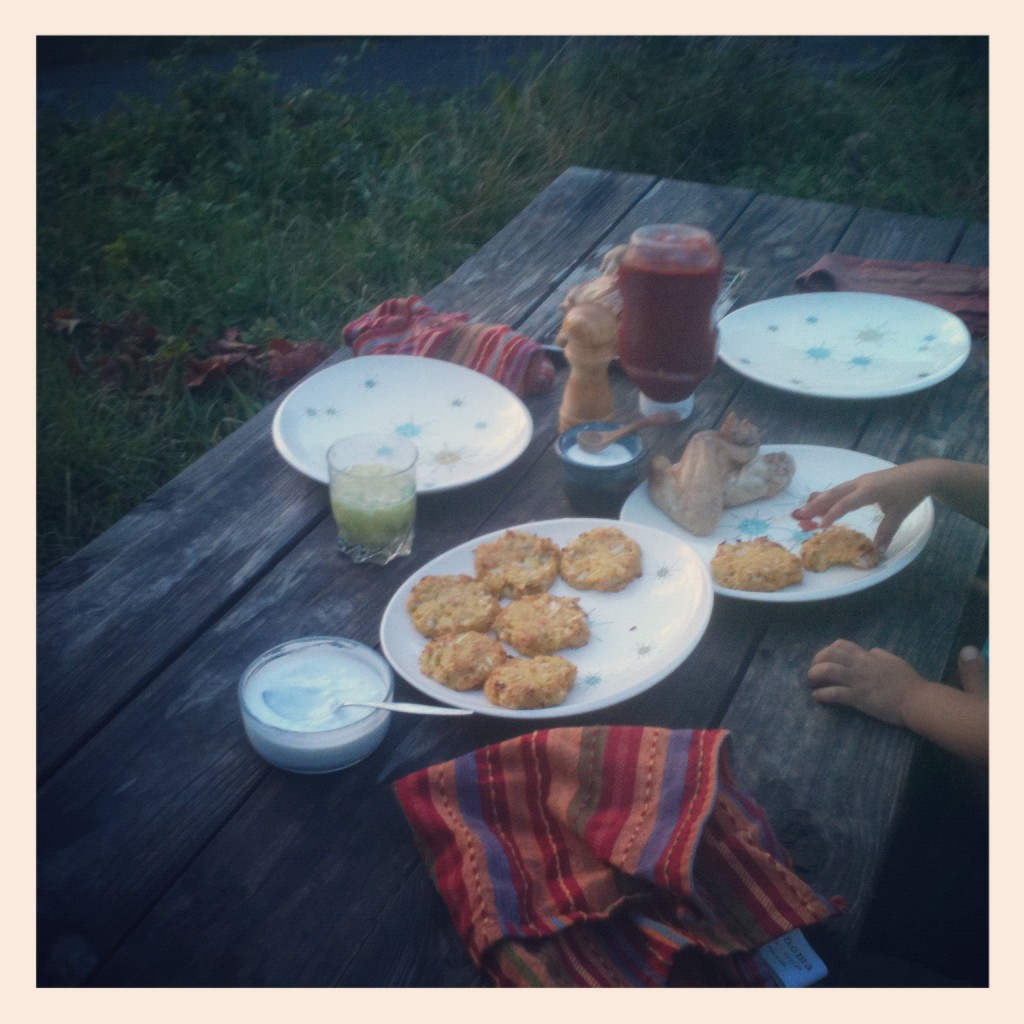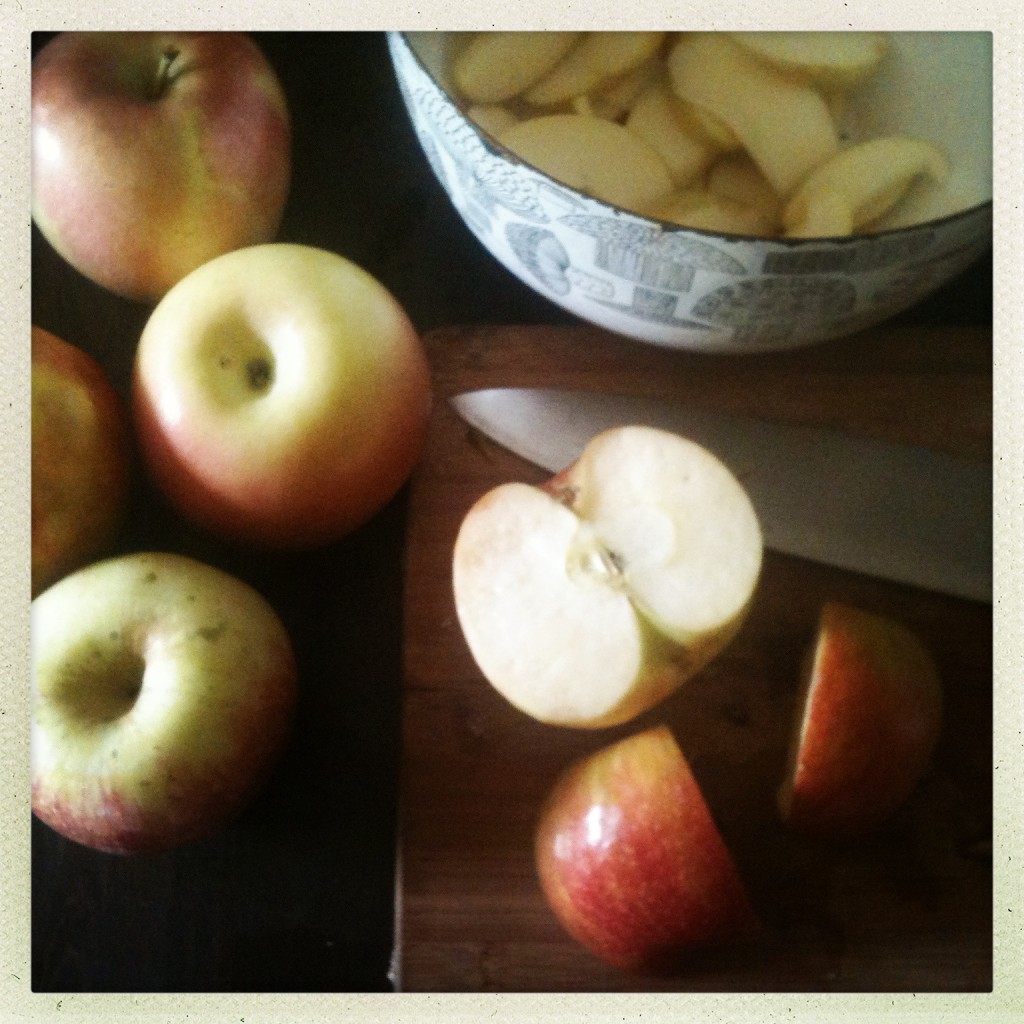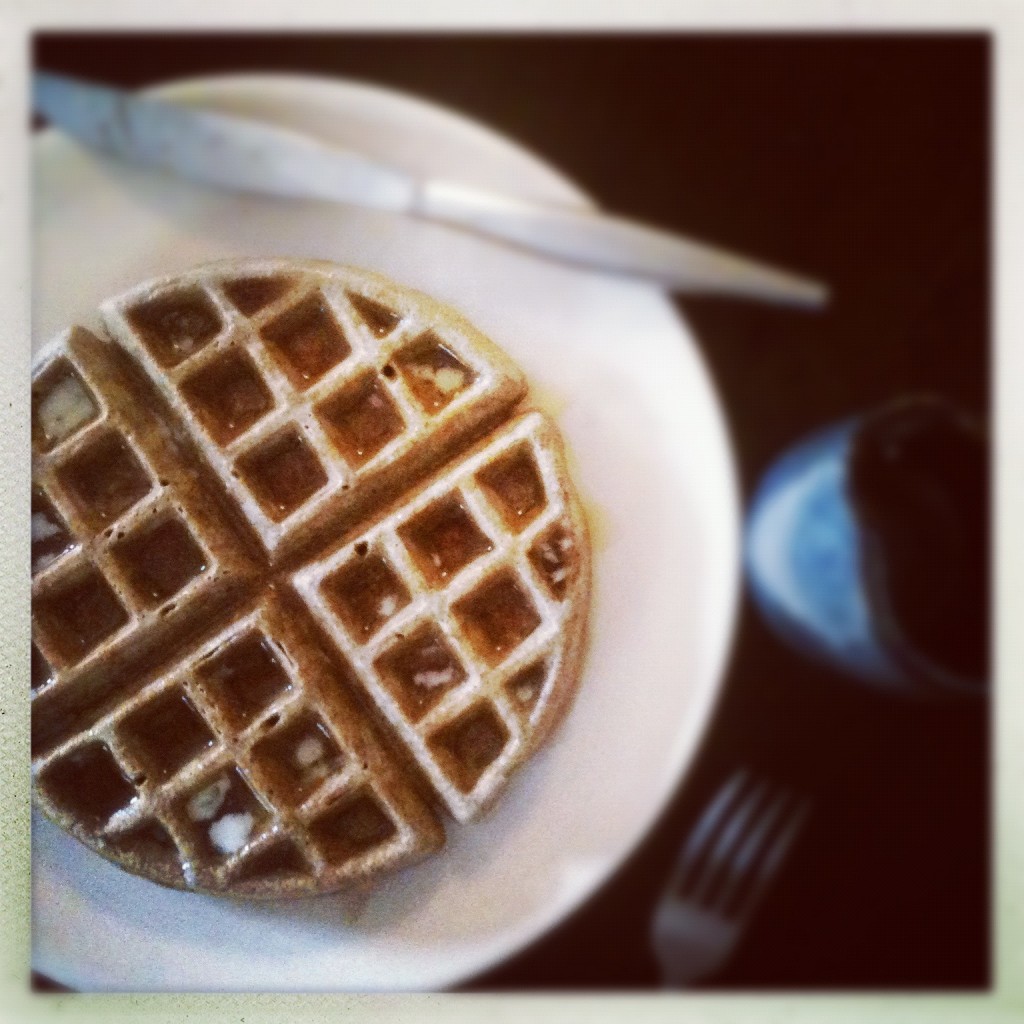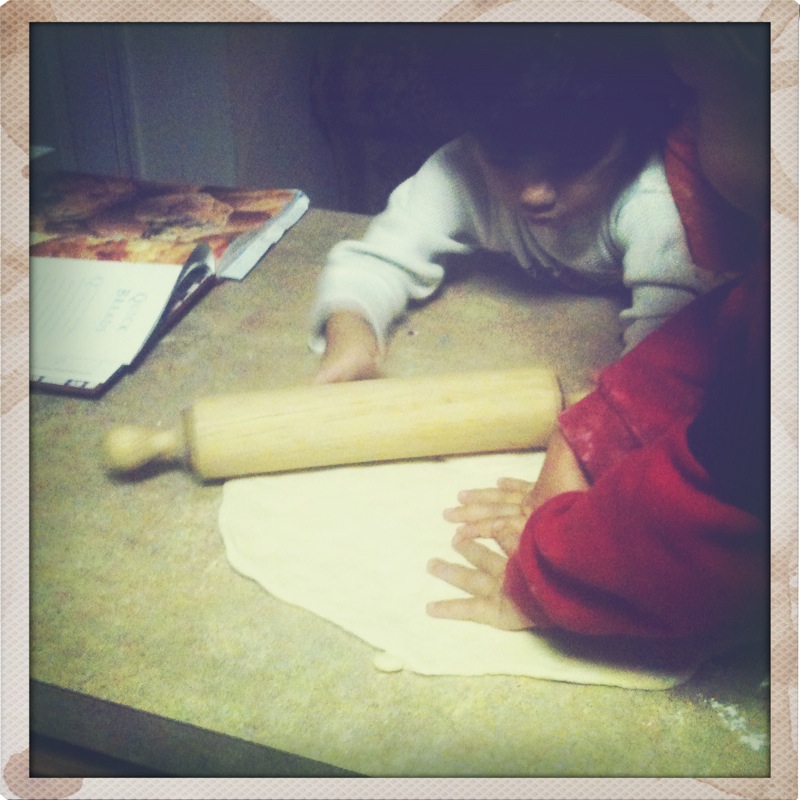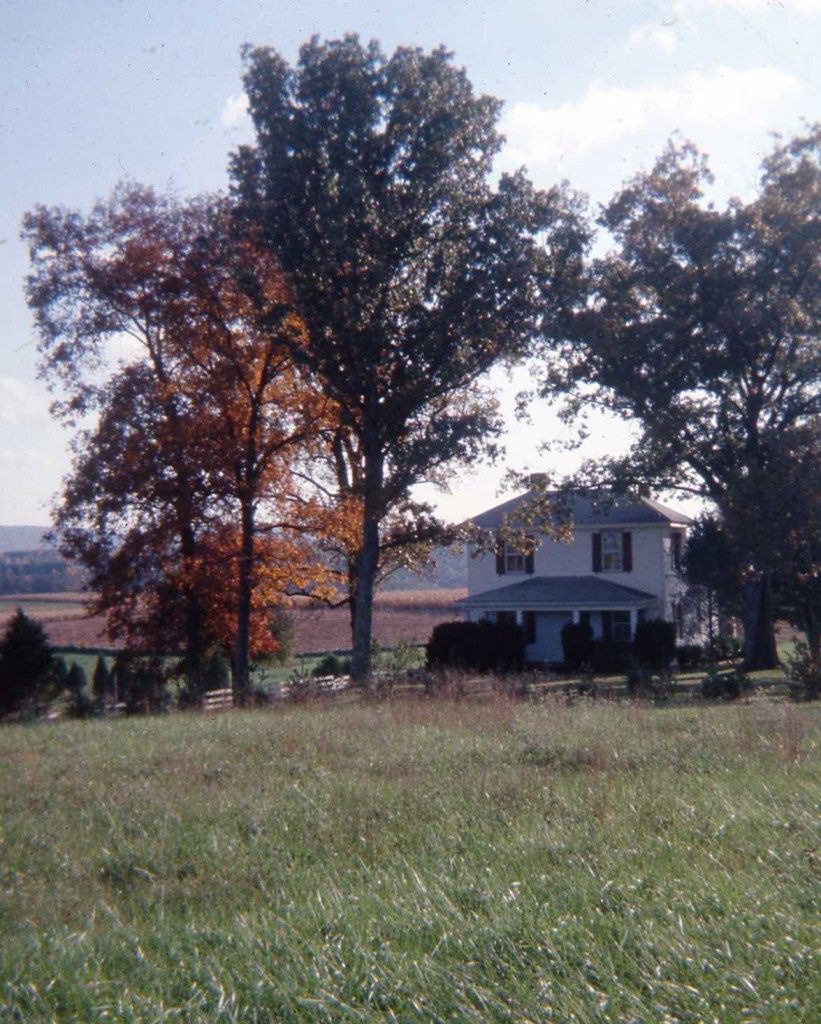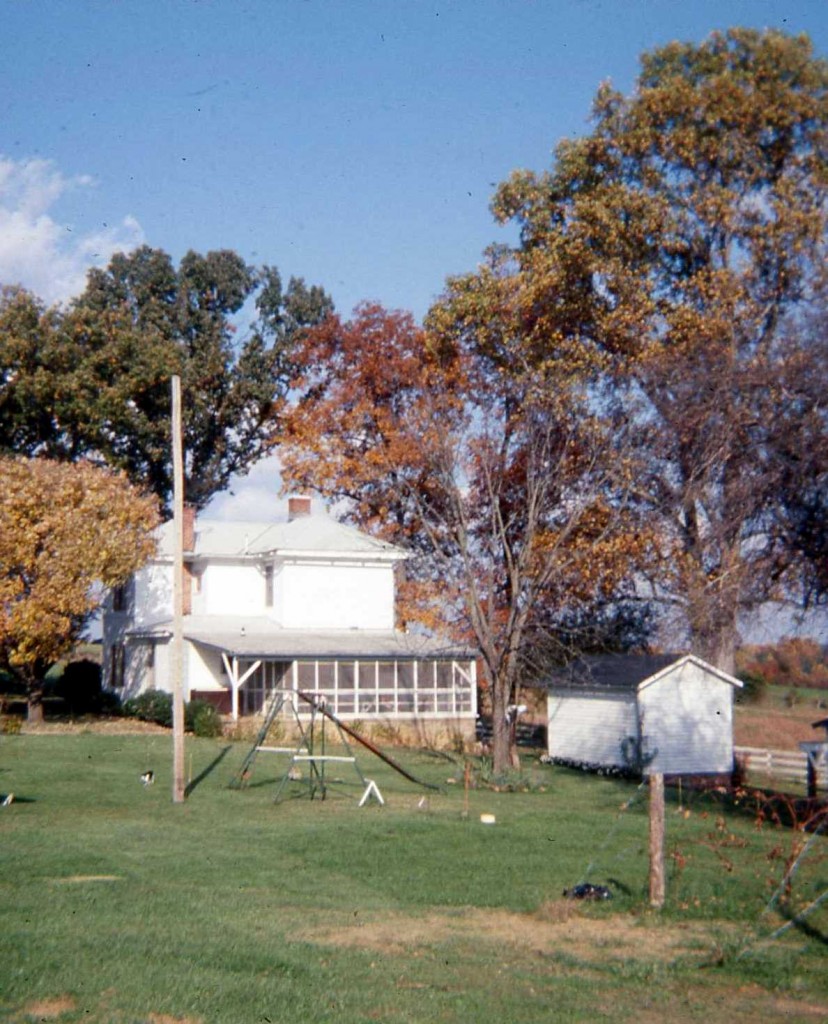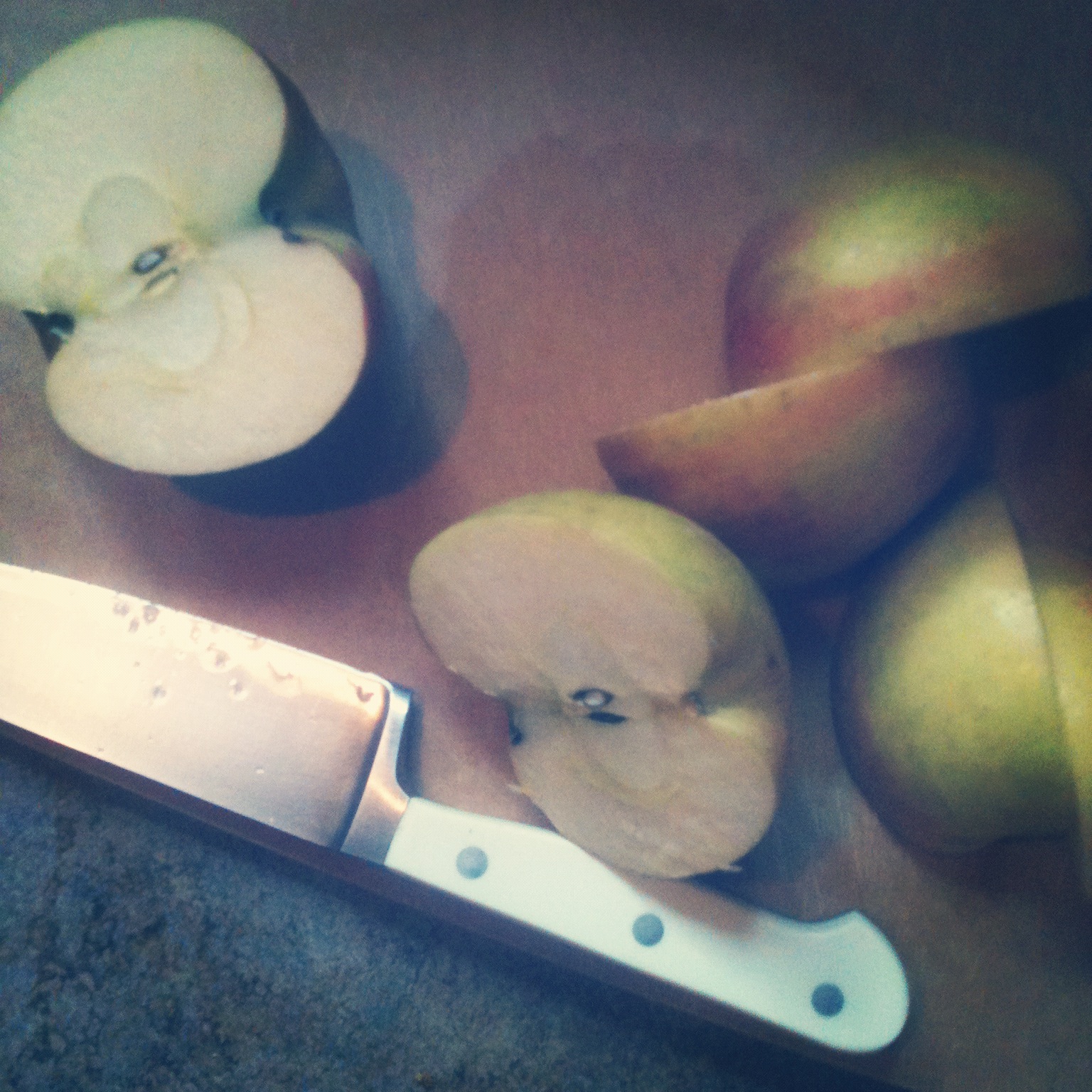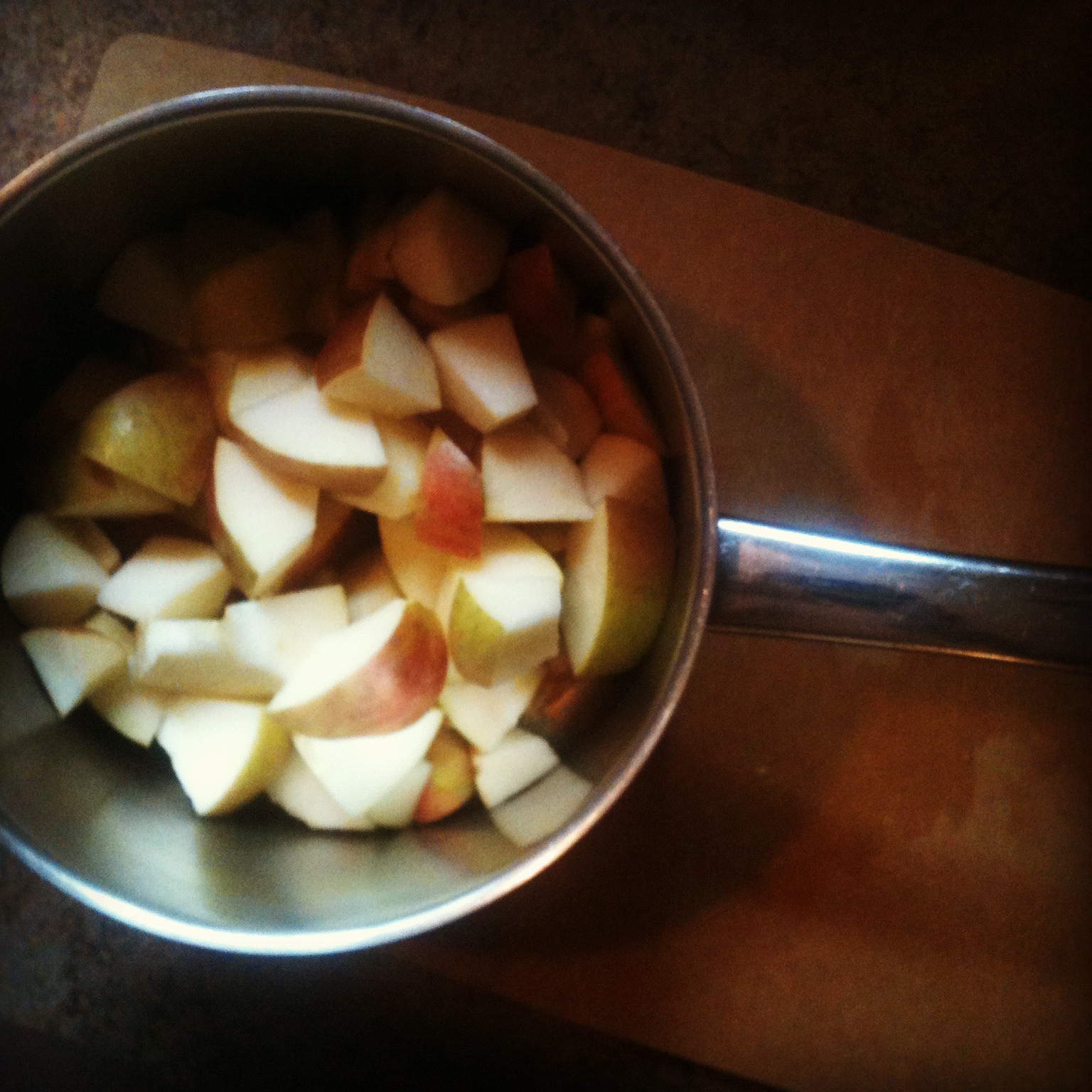Oh, friends. Can I tell you about this evening? Can I tell you about the amazing meal my husband made with a certain two-year old and his end-of-the-day sillies while I was getting some work done in a local cafe? Can I tell you about the killer Caesar salad with homemade dressing and croutons he made from a local baker’s bread and our own lettuce and cherry tomatoes and eggs and garlic and chicken? Can I tell you about the cheesy grits full of delicious butter and cheese? Can I tell you about the two-year old who screamed, “I don’t like grits I DON’T LIKE GRITS IDON’TLIKEGRITSICAN’TEATTHEM!!!!!” for a very long time and then proceeded to eat a giant plate full of Caesar salad covered in garlicky anchovy dressing?
This business of toddlers and food is a tricky one. Sometimes I want to pull my hair out. Sometimes it is so stressful I completely lose sight of the Big Picture, the one where this too shall pass, the one where I remember how important these power struggles are as our little people become bigger people, the one where I know he and we will survive his toddlerhood just fine.
I think that in those times where I can barely see past the end of my dinner fork, it is important to remember it’s not always like this. In that spirit I am reposting something I wrote a couple weeks ago over at our farm blog. I think it fits perfectly here.
As we ate these outside at the picnic table last night, in a spell of blessed cool after a quick little thunderstorm, I realized it was the fifth time we’d eaten them in under two weeks. I think that means they’re a winner. I think that means y’all need the recipe.
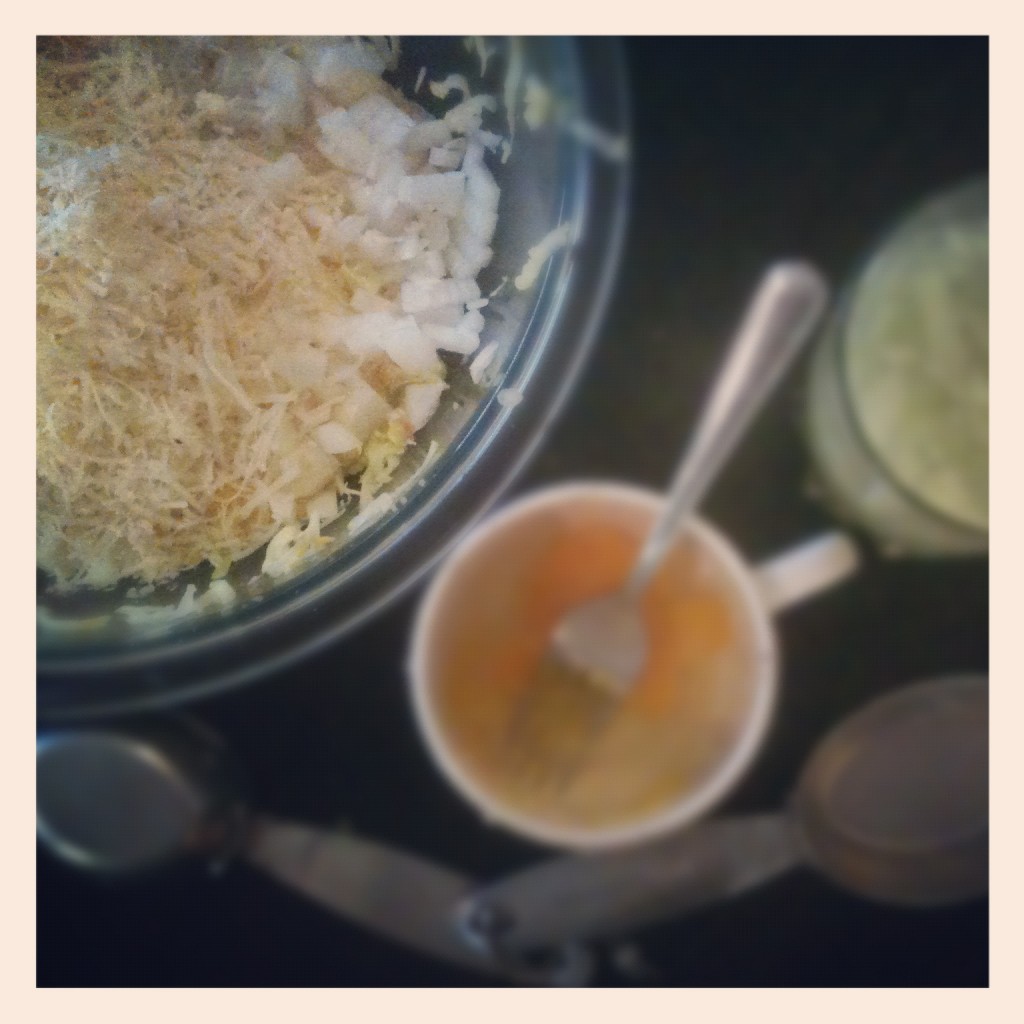
There’s a very small amount of grating and chopping involved, but really these fritters could not be easier. You grate a summer squash or two – I’ve learned that yellow squash, zephyr, and pattypan work best for our family and for a certain particular two-year old right now, but zucchini fritters are particularly pretty. You squeeze the excess water out of the squash with a dishtowel or paper towels – this is the one picky step, but it only takes a minute, and having tried skipping this step, I think it’s worth doing. You chop an onion – mince it, if you’re living with the same two-year old. Then you mix it all up with some flour, some cornmeal, an egg, some cheese, some salt and pepper, and you shape them into patties, and then you pop them in the oven while you set the table. Easy peasy!
A word on picky eaters: we have one. It’s been humbling. I thought because we have fields and countertops and a fridge and two freezers all full of delicious vegetables, that he’d take to them right away. And in his first six months of exploring solid foods, he did. But then he started having strong opinions, opinions like: white and brown foods like milk, yogurt, butter, bread, cheese, crackers, pasta, oatmeal, and eggs are really quite sufficient when it comes to one’s diet. And you know what? I want him to have opinions. I want him to be able to disagree with me. I want him to figure out what he loves and what he doesn’t love. I think he needs my guidance, but I also think he needs my patience and my trust … trust that he’ll survive toddlerhood just fine, trust that he is doing what most two-year olds since the dawn of two-year olds have done, trust that he is developing just as he should.
When I was pregnant I proclaimed I’d never “hide” vegetables in food, but I’m coming to realize it’s more complicated than that. In addition to all the independent toddler stuff going on, I think little people have a very acute sense of taste and texture. I think maybe we need to take it easy on them sometimes. And if that means choosing yellow squash over zucchini sometimes, or mincing the onions instead of chopping them – well, I can do that.
I’ll add that our son loves to help me make these. “Mama, I want to grate!” he says, and so he does, with some help. “Dad, I can break the egg,” he offers, and so he does, and pretty well at that! “Let me squoosh it up, Mama!” he demands, and so he does.
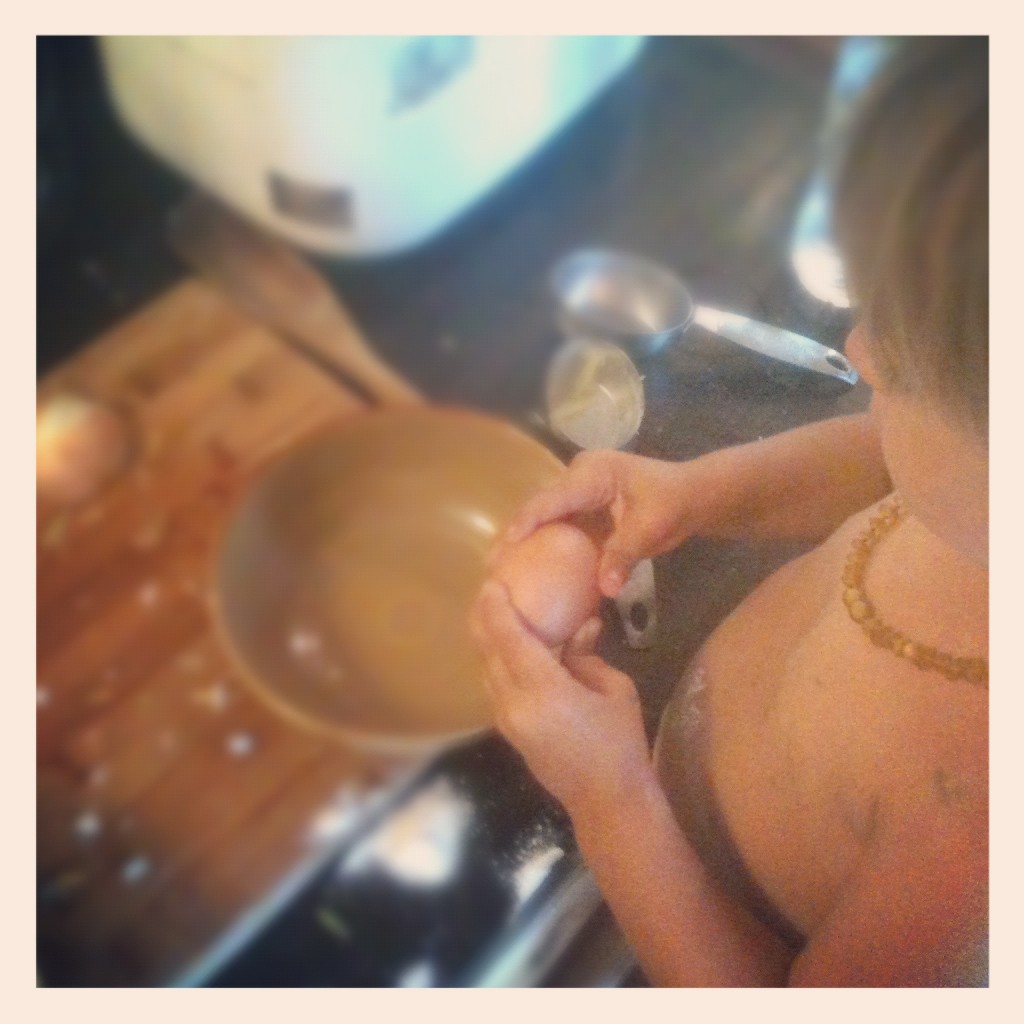
And so we make fritters. Sometimes he eats them. Sometimes he just licks the ketchup off his plate. “Like a dog!” he says.
You should make them too.
Baked Squash (or Zucchini) Fritters with Garlicky Yogurt Sauce
adapted just a bit from The Yellow House
Kid-friendly! Quick! And easy too to make gluten-free – the flour in this recipe just serves as a binder, so replace it with your favorite gluten-free flour and you should be good to go. One friend replaces the flour with masa harina – that sounds really good to us! Also, while parmesan is particularly tasty in these, feel free to use another kind of cheese. We used mozzarella the first time we made these because that’s what was in the fridge, and they were still very good.
These are great with ketchup (our son’s favorite), a fried egg (my favorite), tzatziki, or the quick garlicky yogurt sauce below.
2 cups grated summer squash or zucchini, pressed between layers of a clean dishtowel or paper towels to absorb some of the water
1 small onion, minced
1/4 cup whole wheat pastry flour (or other flour – see note above)
1/3 cup cornmeal
1/4 cup Parmesan cheese, grated
1 egg, lightly beaten
salt and pepper
Preheat the oven to 400°F. Line a baking sheet with parchment paper or a silicone baking mat.
In a large bowl, toss the squash and onion with the flour, cornmeal, and cheese. Add the beaten egg and some salt and pepper, and mix until everything comes together. Use your hands if you like; it’s fun! It should have the consistency of meatloaf.
Using your hands, gently form the mixture into small balls (about 3 tablespoons of mixture for each fritter). Place them on the baking sheet and use your hand to flatten them into small patties about a half-inch thick.
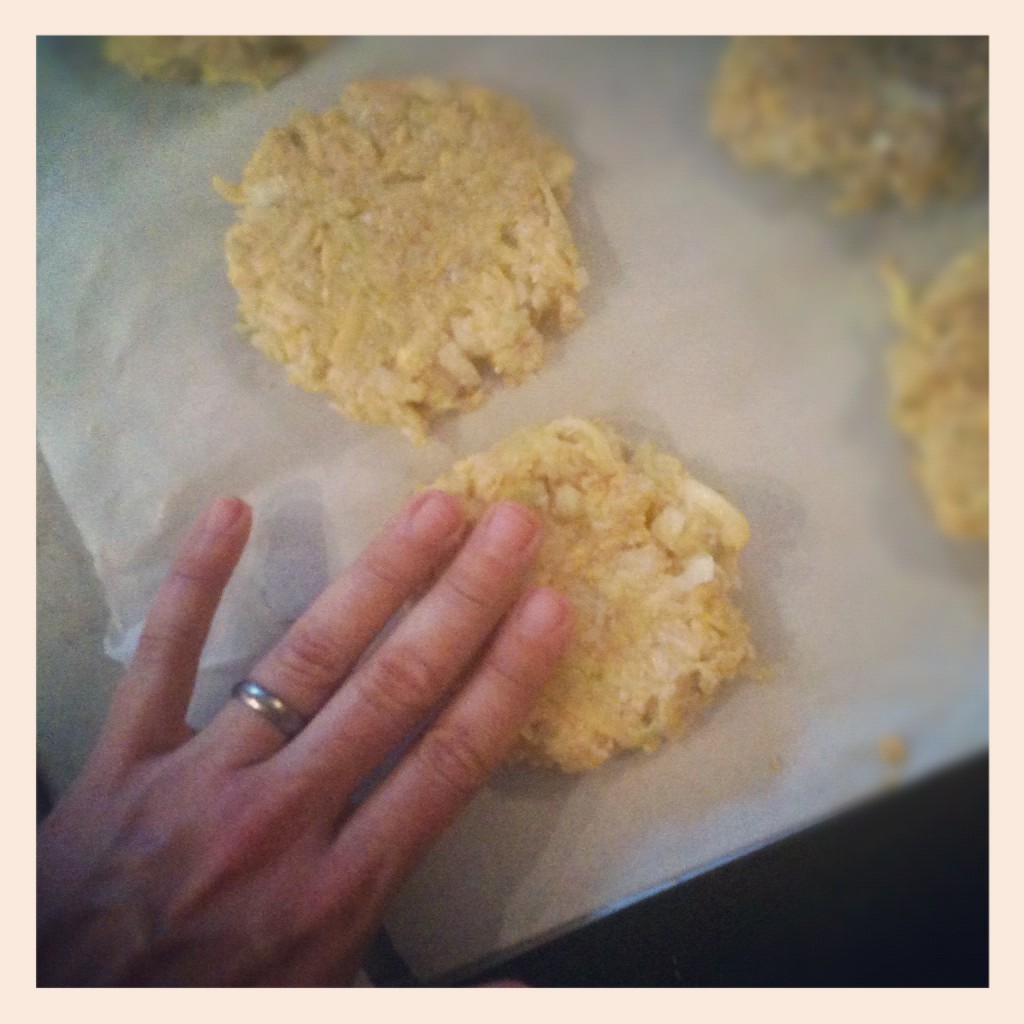
Bake for 15 minutes, until golden brown on the bottom. (If making the yogurt sauce below, make it now – this will give the flavors time to meld a bit.) Then broil for 2-3 minutes longer. The fritters should be a lovely golden color. Good warm or at room temperature. Serve with ketchup, fried eggs, tzatziki, or the garlicky yogurt sauce below.
Makes 6-8 fritters.
Garlicky Yogurt Sauce
3/4 cup yogurt
1/4 teaspoon salt
1 clove garlic, minced
Stir all ingredients together in a small bowl. Taste, and add more salt if you think it needs it. Allow to sit for at least 20 minutes if possible to allow the flavors to meld.
